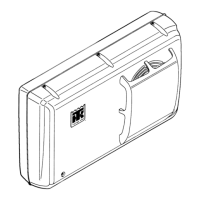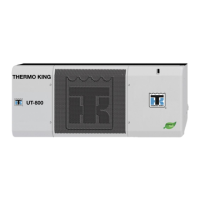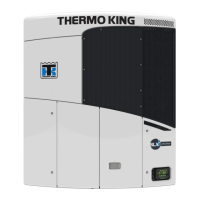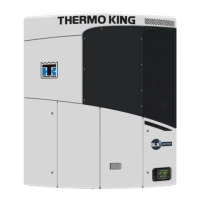Refrigeration Maintenance and Service Operations
145
Installation
1. Add new compressor oil to the new
compressor. Add an amount equal to the
amount removed from the old compressor.
2. Slide the compressor into the unit. Install
mounting bolts, washers and nuts, and tighten.
3. Bolt the discharge and suction service valves
to the compressor. Use a new gasket coated
with compressor oil on the discharge valve.
4. Connect liquid injection line to compressor
body.
5. Apply refrigerant locktite to the threads of the
compressor discharge temperature sensor.
Install the switches.
6. Pressurize the refrigeration system and check
for leaks (see “Refrigerant Leak Test
Procedure” in this chapter).
7. If no leaks are found, recover the refrigerant
used for the leak test (see “Refrigerant
Recovery” in this chapter).
8. Evacuate the system (see “Evacuation and
Cleanup of the Refrigeration System” in this
chapter).
9. Connect three-phase electric power to the
compressor.
10. Recharge the unit with R-404A (see
“Charging the System with Refrigerant” in
this chapter).
11. Perform a controller pre-trip test to verify
system operation. Check compressor oil level.
NOTE: When the compressor is removed
from the unit, oil level should be noted or the
oil removed from the compressor should be
measured so that the same amount of oil can
be added before placing the new compressor
or repaired compressor in the unit.
Condenser Coil Replacement
Removal
1. Recover the refrigerant charge from the unit
(see “Refrigerant Recovery” in this chapter).
2. Remove the condenser fan grille, condenser
fan blade and condenser fan shroud.
3. Remove the condenser coil support brackets
from the coil.
4. Unsolder the coil inlet and liquid line
connections.
5. Support the coil and unbolt the condenser coil
mounting brackets. Slide the coil from the
unit.
Installation
1. Clean the tubes for soldering.
2. Slide the coil into the unit and install the bolts
in the mounting brackets.
3. Solder the inlet line and liquid line
connections.
NOTE: It is strongly recommended that dry
nitrogen be used to purge the system during
any solder operations (see “Using
Pressurized Nitrogen” in this chapter).
4. Pressurize the system and test for leaks (see
“Refrigerant Leak Test Procedure” in this
chapter).
5. If no leaks are found, recover the leak test gas
(see “Refrigerant Recovery” in this chapter).
6. Evacuate the system (see “Evacuation and
Cleanup of the Refrigeration System” in this
chapter).
7. Replace the condenser coil support brackets,
condenser fan shroud and condenser fan grille.
8. Recharge the unit with R-404A (see
“Charging the System with Refrigerant” in
this chapter).
9. Perform a controller pre-trip test to verify
system operation. Check compressor oil level.
CAUTION: Use ONLY Polyol Ester based
refrigeration compressor oil (refer to Tool
Catalog). Keep Polyol Ester based
compressor oil in tightly sealed
containers. If Ester based oil becomes
contaminated with moisture or standard
oils, dispose of properly—DO NOT USE!
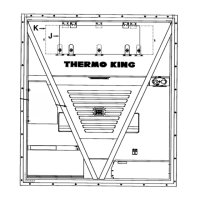
